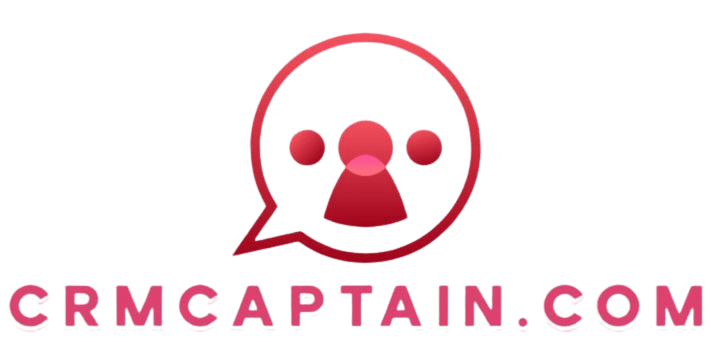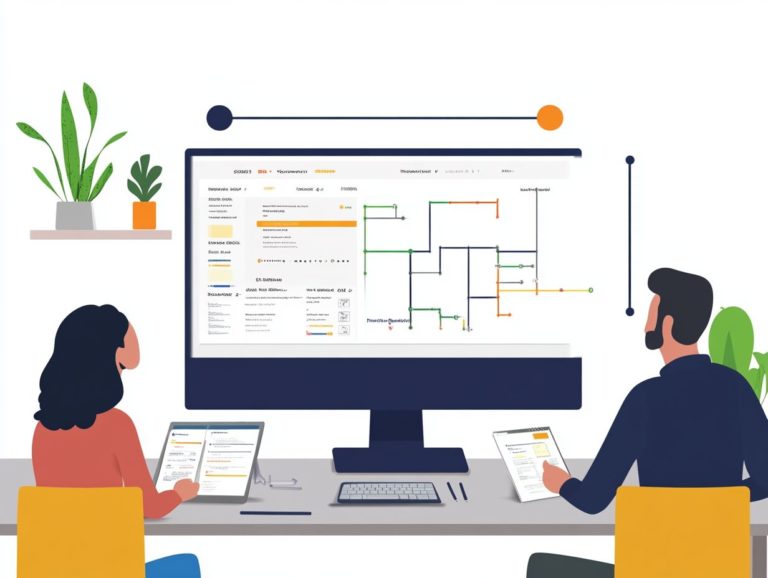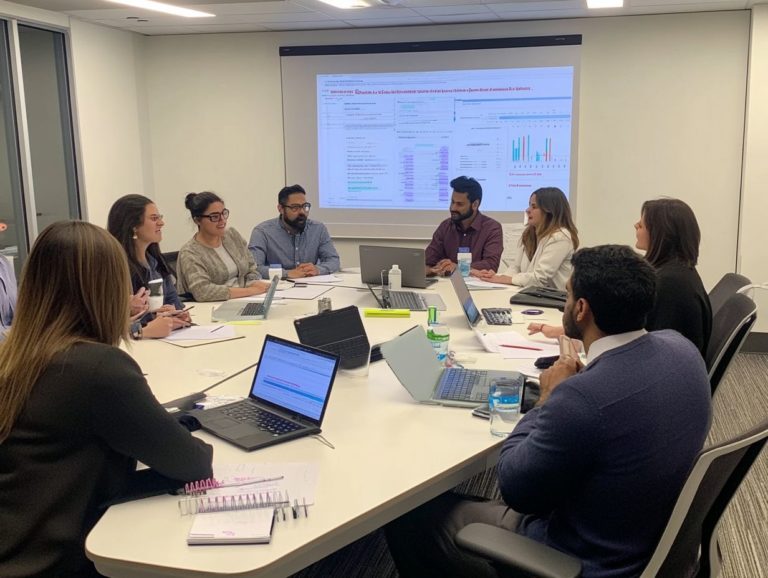“How to Conduct a CRM User Needs Assessment”
In today s fast-paced business landscape, grasping the needs of your CRM users is essential for achieving success.
Conducting a detailed review of users needs can effectively bridge gaps, elevate user satisfaction, and foster greater adoption.
This article will walk you through the key steps for executing a CRM User Needs Assessment, from defining clear objectives to implementing actionable changes.
By prioritizing feedback from people affected by the CRM and honing in on user needs, you can transform your CRM into a formidable tool that enhances both efficiency and effectiveness.
Contents
- Key Takeaways:
- Understanding CRM User Needs
- How to Assess CRM User Needs
- Implementing Changes Based on Needs Assessment
- Benefits of Conducting a CRM User Needs Assessment
- Frequently Asked Questions
- What is a CRM user needs assessment?
- Why is conducting a CRM user needs assessment important?
- What are the steps involved in conducting a CRM user needs assessment?
- How do you identify the stakeholders for a CRM user needs assessment?
- What methods can be used to gather user feedback for a CRM user needs assessment?
- How often should a CRM user needs assessment be conducted?
Key Takeaways:

A CRM User Needs Assessment identifies what users want. This leads to happier users and better adoption.
The key steps to conducting a successful needs assessment include defining the purpose and scope, identifying stakeholders, gathering data and feedback, and prioritizing needs.
Implementing changes based on the needs assessment, such as developing an action plan and providing training, can lead to increased efficiency and effectiveness of the CRM system.
Understanding CRM User Needs
Understanding CRM user needs is vital for businesses. It ensures the software meets user requirements and aligns with organizational goals.
By conducting a detailed review of users needs, you can pinpoint the unique features essential for effective data management and user adoption. Clear goals will help everyone communicate better, improve tracking, and drive overall productivity as you work to optimize your CRM processes.
Ultimately, this focus on well-considered choices can lead to significant revenue growth for your business.
Why Conduct a Needs Assessment?
Conducting a needs assessment is essential to align your CRM systems with user goals and performance metrics. This ensures the software caters to the unique requirements of various teams, including sales and marketing.
This systematic approach allows you to gather user expectations, which directly impacts the overall effectiveness of your CRM applications.
By evaluating vendors’ capabilities against these specific needs, you can make informed choices that prioritize performance and integration.
Gathering comprehensive feedback from end users is pivotal in identifying gaps in functionality and usability, guiding necessary adjustments.
This thorough assessment enhances user experiences and drives improved organizational efficiency, positioning your company for sustained success in a competitive landscape.
How to Assess CRM User Needs
To effectively conduct a CRM User Needs Assessment, adopt a systematic approach. This includes clearly defining the purpose of the assessment, identifying key stakeholders, gathering relevant data, and analyzing user feedback.
By prioritizing needs within the overall software evaluation process, you ensure that your assessment is thorough and aligned with your business objectives. This structured methodology ultimately guides you toward informed decisions regarding CRM implementation and vendor selection.
1. Define the Purpose and Scope
Defining the purpose and scope of a CRM User Needs Assessment requires you to articulate clear goals that align seamlessly with your organizational objectives and the specific user needs the assessment intends to address.
Establishing these objectives ensures your assessment contributes meaningfully to enhancing customer interactions and streamlining business processes. By understanding user needs, you can tailor your CRM systems to facilitate improved communication, foster stronger relationships, and enhance overall effectiveness.
This clarity in purpose aids in identifying potential challenges and opportunities. Aligning these efforts with broader business strategies such as increasing customer retention or optimizing sales processes integrates the assessment into your organization’s operational framework, paving the way for anticipated positive outcomes throughout the enterprise.
2. Identify Key Stakeholders

Identifying key stakeholders is crucial for including all relevant voices in your CRM user needs assessment. This means engaging everyone from sales and marketing teams to IT and top management.
To capture a comprehensive view of user needs, you must understand the roles of individuals from different departments. Sales teams often highlight usability and automation features to streamline their processes. In contrast, marketing may prioritize data analytics for targeted campaigns. Meanwhile, IT personnel will likely champion integration capabilities and system security.
By encouraging collaboration among these diverse teams, you tap into a richer pool of insights. This approach ensures you capture essential insights that will shape the future of your CRM!
3. Gather Data and Feedback
Collecting user feedback is a game-changer for your CRM assessment! This step offers invaluable insights into user experiences, preferences, and pain points insights that can drive future software enhancements.
To gain a comprehensive understanding, you can employ various data collection methods, including surveys, interviews, and focus groups.
- Surveys allow you to gather quantitative metrics, enabling scalable feedback from a wide user base.
- Interviews provide deeper qualitative insights through intimate, one-on-one discussions.
- Focus groups foster dynamic conversations that can spark new ideas and uncover hidden issues.
By integrating user feedback into your assessment, you create a clear picture of user expectations. This ultimately refines your communication strategies and prioritizes features that align with a user-centric approach.
4. Analyze and Prioritize Needs
Analyzing and prioritizing your needs is essential for transforming insights from your assessment into actionable outcomes. This process enables you to focus on areas that need immediate attention while aligning with your strategic objectives.
It requires a careful review against established criteria such as urgency, impact, and feasibility. Engaging key stakeholders and using methods like SWOT analysis a method for assessing strengths, weaknesses, opportunities, and threats helps pinpoint which user needs are most pressing.
Aligning these insights with your organization’s broader goals fosters a cohesive strategy that optimizes resource allocation. Prioritizing user needs ensures your decision-making process is informed and strategic, paving the way for effective solutions.
Implementing Changes Based on Needs Assessment
Implementing changes based on the CRM user needs assessment transforms insights into actionable strategies. This process creates a robust action plan tailored to meet identified user requirements.
5. Develop an Action Plan
Creating an action plan is essential for turning insights from the CRM user needs assessment into targeted strategies and tasks. This plan addresses identified requirements and elevates user experience.
A well-structured action plan not only lays the groundwork for effective implementation but also establishes clear timelines to ensure everything runs smoothly. It should specify assigned responsibilities, helping team members understand their roles throughout the process.
Measurable objectives are vital for tracking progress, allowing your team to gauge the impact of various strategies on user engagement and satisfaction.
By incorporating these elements, the action plan becomes a comprehensive roadmap that gives the power to stakeholders to make informed decisions and adjust their approaches as necessary to enhance the overall user experience.
6. Communicate and Train Users

Effective communication and training are essential for successful CRM system adoption. Helping users feel confident with the software aligns expectations with your organization’s goals.
This step improves user experience and boosts productivity. It reduces resistance to change and enhances overall satisfaction.
Engage users through tailored training sessions. Making the software’s features easy to understand empowers them to leverage its potential fully.
Implement communication strategies like regular updates and accessible resources. These encourage a culture of continuous improvement.
Prioritizing CRM adoption fosters a supportive environment. This contributes directly to achieving business goals and maximizing your return on investment.
7. Monitor and Evaluate Progress
Monitoring progress after implementing your CRM system is crucial for assessing its effectiveness. This proactive approach allows for necessary adjustments based on user feedback.
Use tools like customer surveys and sales data analytics to gather insights. Analyzing these metrics helps you identify trends and areas for improvement.
Regular feedback from users reveals pain points and successes. This fosters a culture of ongoing improvement.
Implement dashboards to streamline evaluations. They provide real-time insights, empowering your teams to make informed decisions quickly.
Benefits of Conducting a CRM User Needs Assessment
Conducting a CRM user needs assessment brings many benefits. It elevates user satisfaction, streamlines operational processes, and enhances overall effectiveness.
This sets the stage for improved business performance and smoother client interactions.
Improved User Satisfaction and Adoption
Thoughtfully assessing user needs improves satisfaction and adoption. It ensures software features meet user expectations, leading to a more enjoyable experience.
Engaging users through surveys and interviews provides valuable insights. This helps identify specific pain points and desires.
A comprehensive assessment creates a tailored development process. Your input directly shapes the software’s functionality.
Enhanced communication with developers fosters ownership and involvement. This leads to higher satisfaction and adoption rates.
When you see your needs prioritized, your overall experience improves. This encourages you to utilize the CRM to its full potential.
Increased Efficiency and Effectiveness
Conducting a thorough needs assessment increases efficiency and effectiveness in CRM processes. It helps streamline operations and allocate resources to meet user requirements.
By identifying user needs, you can implement targeted strategies. This addresses service delivery gaps and enhances customer engagement.
This understanding allows you to prioritize features that align with your goals. A good needs assessment empowers you to leverage data analytics in real-time.
Adopting this proactive approach enhances operational efficiency and boosts customer satisfaction.
Frequently Asked Questions

What is a CRM user needs assessment?
A CRM user needs assessment looks at the specific needs of individuals using a Customer Relationship Management system. This process identifies necessary features to enhance user experience.
Why is conducting a CRM user needs assessment important?
Conducting a CRM user needs assessment is essential because it tailors the system to user needs. This can lead to increased user satisfaction and improved efficiency.
What are the steps involved in conducting a CRM user needs assessment?
The steps in a CRM user needs assessment include identifying stakeholders and gathering user feedback. After that, analyze the data, identify common needs, prioritize them, and create an action plan.
How do you identify the stakeholders for a CRM user needs assessment?
Stakeholders can include CRM users, managers, the IT department, and others involved with the system. Involving all relevant stakeholders is key for a thorough assessment!
What methods can be used to gather user feedback for a CRM user needs assessment?
Methods to gather user feedback include surveys, focus groups, interviews, and usability testing. Choose a method that suits the users’ needs and preferences.
How often should a CRM user needs assessment be conducted?
A CRM user needs assessment should be conducted periodically, based on changes in the business or user needs. It’s recommended to assess at least once a year or after significant system updates.






